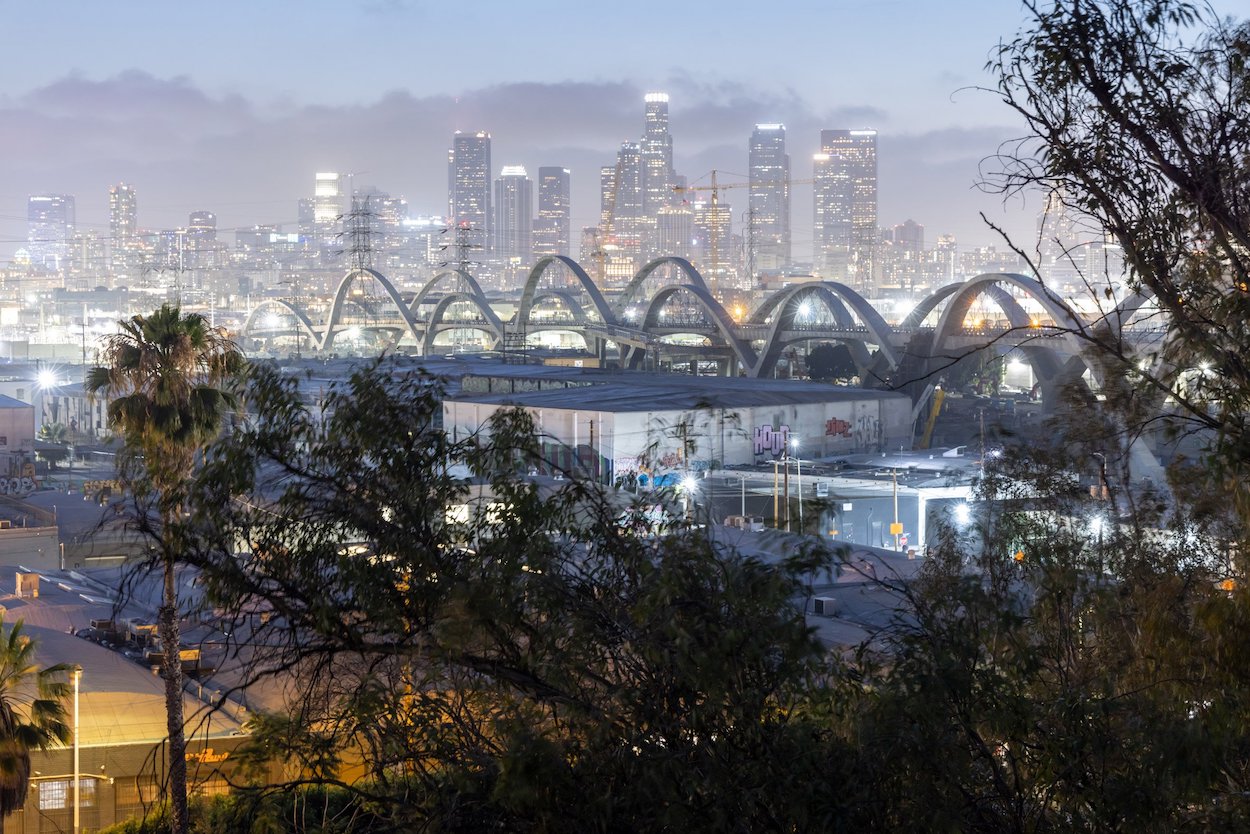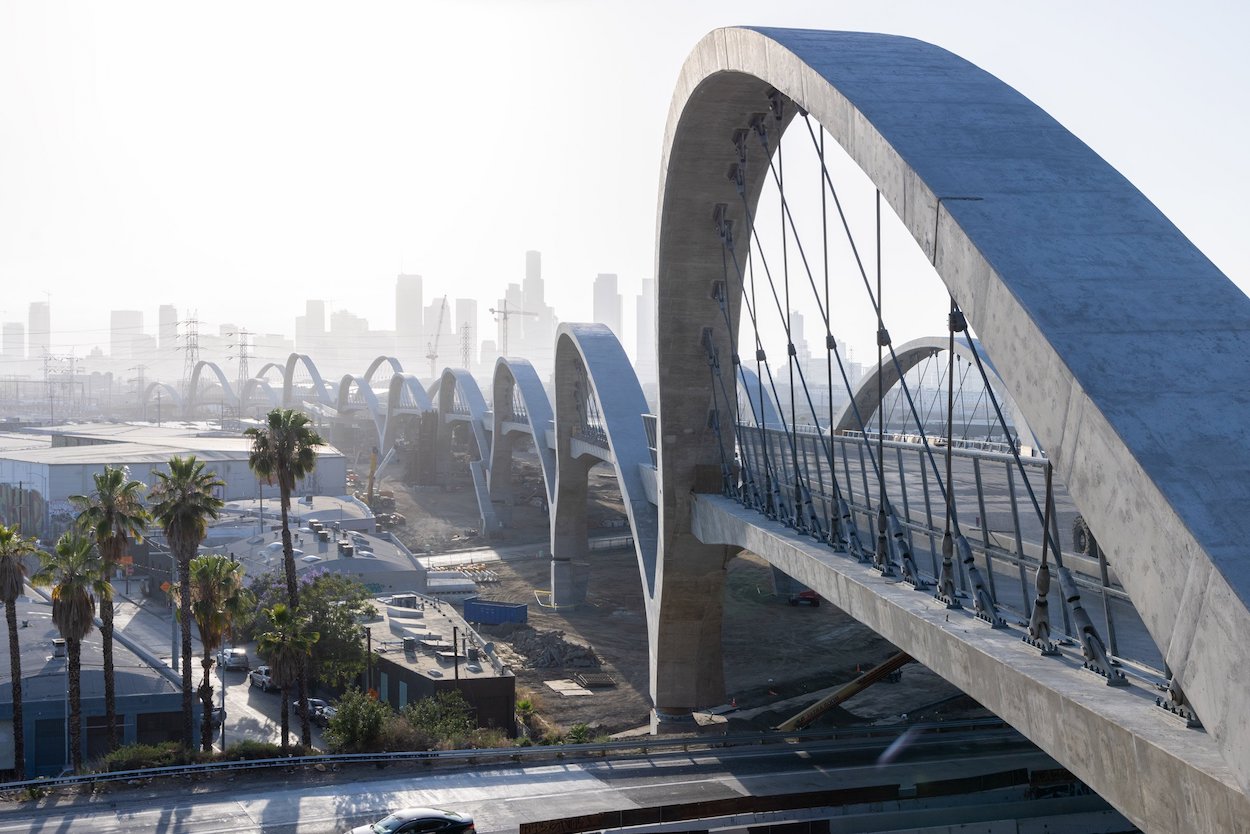This past weekend, Michael Maltzan revealed his architecture firm’s most visible project yet—and one hoping to transform how Angelenos view and approach infrastructure. The city pulled up the curtain on the 3,500-foot-long Sixth Street Viaduct, designed in collaboration with infrastructure engineers HNTB. Also called the “Ribbon of Light” for its colorful nighttime LEDS, the structure’s gently undulating concrete arches swoop across rail lines, the 101 Freeway, and the Los Angeles River to connect the Arts District with Boyle Heights near downtown. Its pattern is both poetic and playful—not unlike that left by a pebble skipping across water.
The Sixth Street Viaduct is the culmination of a decade-long effort to replace an irreparably deteriorating concrete bridge—a vintage overpass shaped by the City Beautiful movement that opened in time for L.A.’s first Olympic Games in 1932. Its notable side-by-side arches became a symbol of L.A., backdropping the action in films like Grease and Terminator. Over time, the bridge slowly succumbed to sand penetrating the concrete and producing a degenerative alkali-silica reaction—described as a “cancer”—that caused severe cracking and compromised its structural integrity. That doesn’t fly in earthquake-prone L.A., so the city’s Bureau of Engineering demolished the bridge in 2016.
Preservationists vied for a faithful reconstruction, but Maltzan and HNTB’s dynamic concept nods to the original while elevating both its architectural gestures and accessibility. Adorning its tilting concrete arches are glowing LEDs visible from miles away, making the bridge a luminous civic beacon. They light up the newly created pedestrian sidewalks and bicycle paths, which are accessible by five stairways and a giant ADA-compliant helical ramp. A community park by landscape architects Hargreaves Jones is taking shape underneath. The bridge can also transform into a public gathering place, and was designed to bear a load of 90 pounds per square foot—or 23 million pounds total—for events. (Proof of concept: the grand opening ceremony this past weekend, which featured two days of live music and scores of food trucks, attracted 15,000 enthusiastic Angelenos.) Most importantly, it can withstand a 9.0 earthquake, which scientists predict happens once per millennium.
“Part of the brief was to replace one icon with another,” Maltzan tells Architectural Record, “but this was also a chance to create a true civic space, not just a means of getting from point A to point B.” Some are already touting the Sixth Street Viaduct’s massive concrete arches as an irrefutable L.A. landmark, on par with the Hollywood sign or Chris Burden’s Urban Light at LACMA. While its longevity in the city’s collective consciousness beyond opening-day excitement remains to be seen, those early comparisons are stoking concerns that a flashy new amenity may galvanize further gentrification in Boyle Heights, a working-class Latino neighborhood fighting to retain its character. Directly across the river is the Arts District, which is undergoing a rapid transformation as luxury residential, hotel, and office projects by the likes of Herzog & de Meuron and Bjarke Ingels Group are taking shape.



